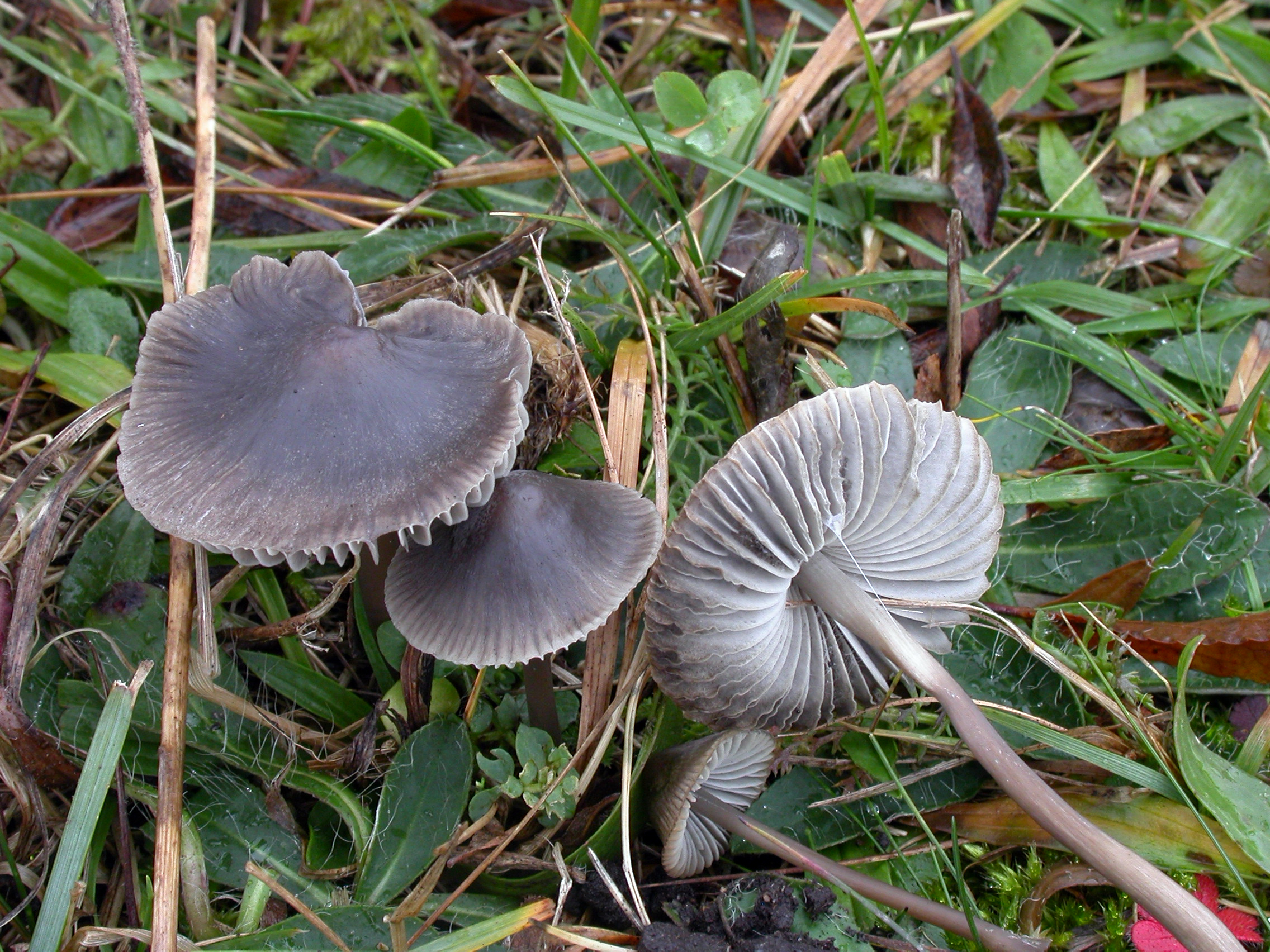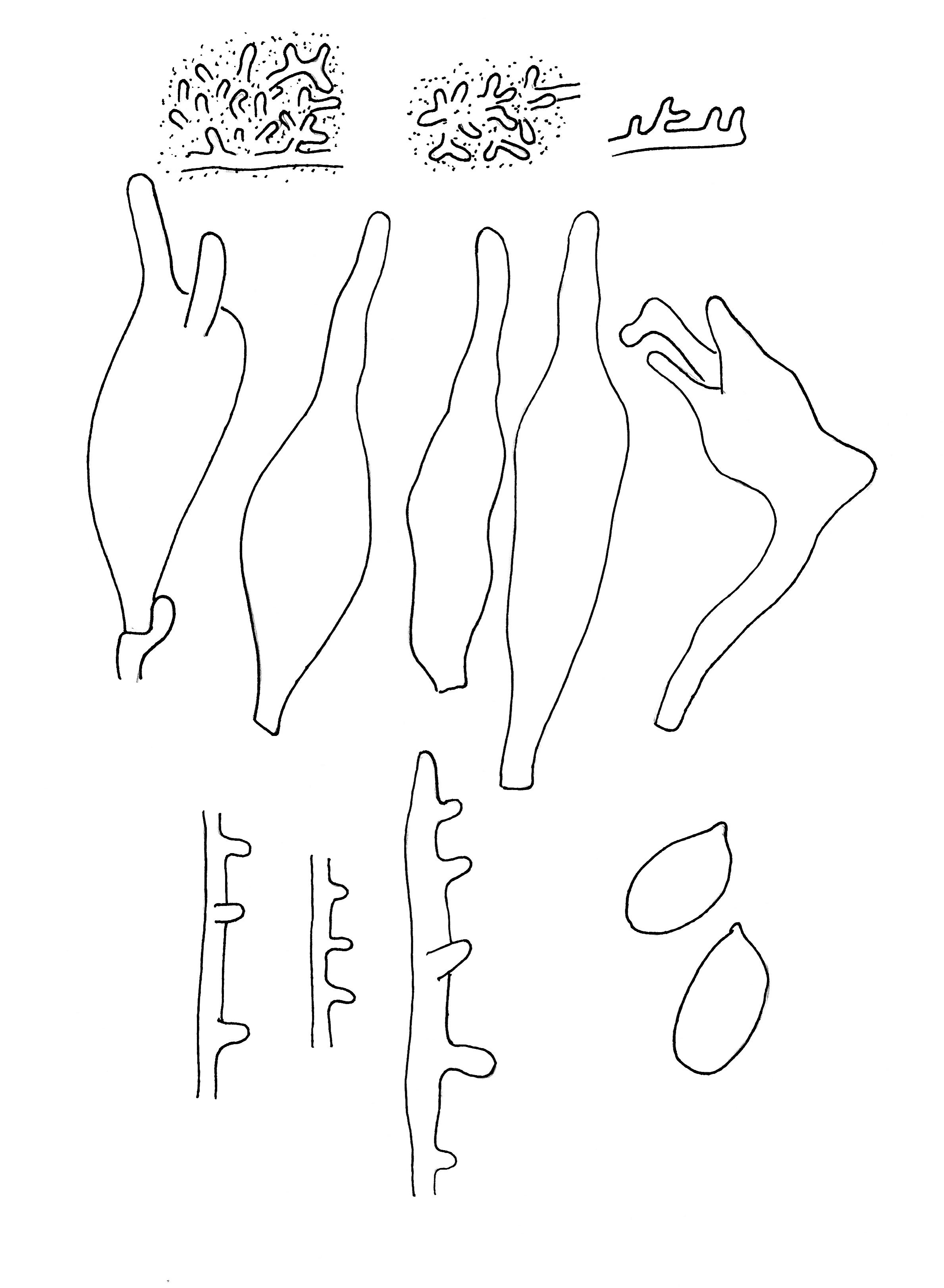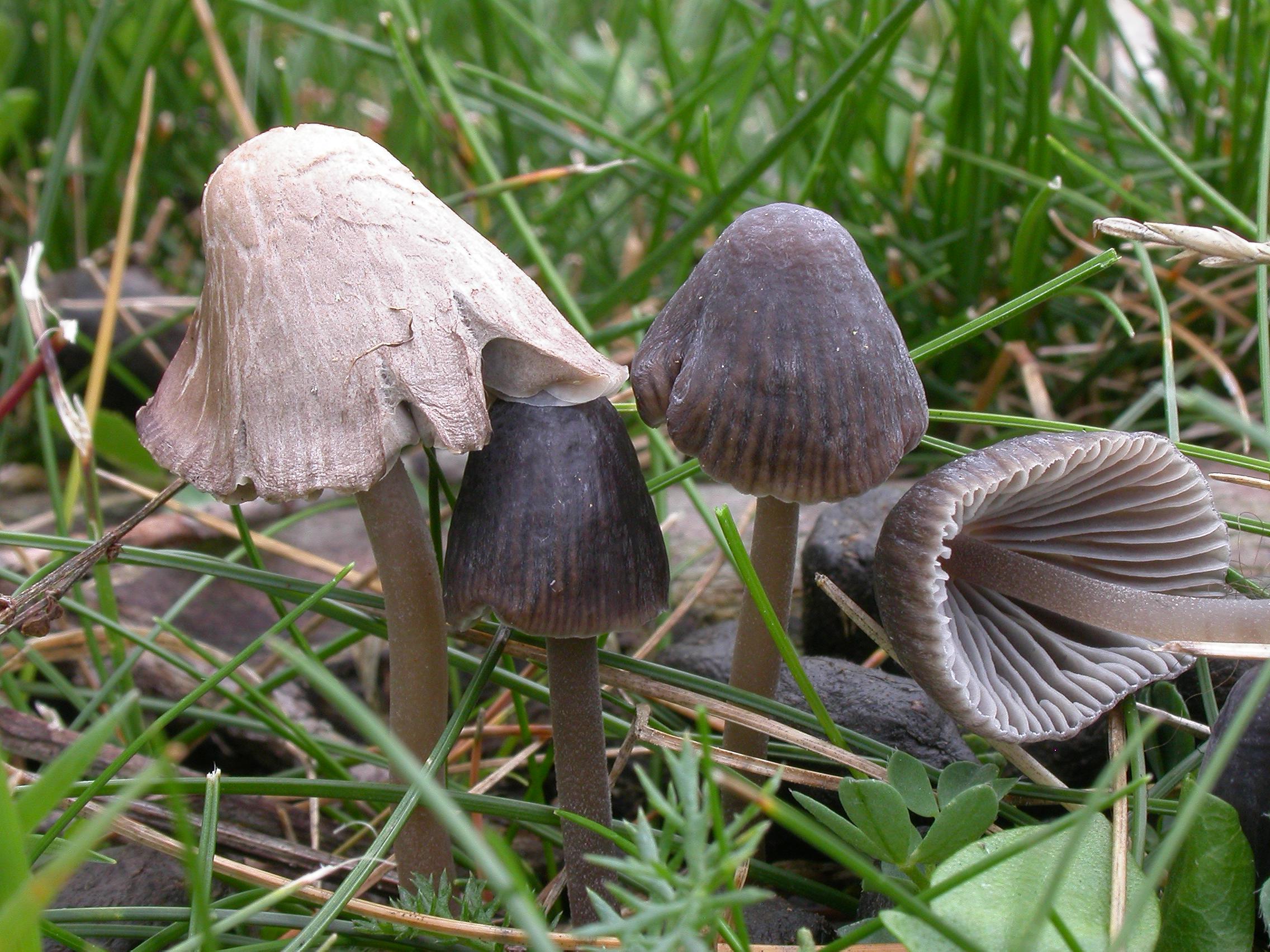Mycena aetites
Mycena aetites
Description
Hyphae of the pileipellis, cheilocystidia, hyphae of the cortical layer of the stem, and spores.
Cap 10-35 mm across, conical with acutely pointed centre, campanulate with or without an umbo, convex to more flattened with a prominent, broad umbo, pruinose, glabrescent, translucent-striate when moist, sulcate, somewhat lubricous when moist, hygrophanous, black to dark brown in the centre, grey-brown to grey towards the grey to whitish margin, fading to dark grey to grey. Gills 17-25 reaching the stem, ascending, narrowly adnate, sometimes with a short tooth, dorsally intervenose with age, dark to pale grey with the edge paler. Stem 25-70 x 1.5-5 mm, hollow, straight or somewhat curved, fragile, equal or somewhat thicker towards the base, terete, with age sometimes somewhat depressed and fissured, pruinose at the apex, glabrous below, pale brown, grey-brown or greyish, darker below, the lower parts sometimes blackish brown, the base covered with long, coarse, flexuous white fibrils. Odour indistinctive, acidulous or somewhat raphanoid when cut, not nitrous. Basidia 27-36 x 7-10 µm, clavate, 4-spored. Spores 7 - 11 x 5 – 6.5 µm, Q = 1.5-2.1, pip-shaped, smooth, amyloid. Cheilocystidia 25 - 75 x 6.5 22.5 µm, clamped, fusiform, lageniform, subcylindrical or somewhat irregularly shaped, apically with a simple or furcate neck, sometimes also with few, very coarse excrescences. Pleurocystidia scarse, fusiform. Lamellar trama dextrinoid. Hyphae of the pileipellis 2-4.5 µm wide, clamped, covered with simple to very much branched, cylindrical excrescences, which tend to form dense masses and become gelatinized. Hyphae of the cortical layer of the stem 1-3.5 µm wide, diverticulate, with terminal cells often hard to find, variously diverticulate. Clamps abundant in all tissues.
Ecology and distribution
On lawns, meadows, and grassy areas. Autumn. Widely distributed.


